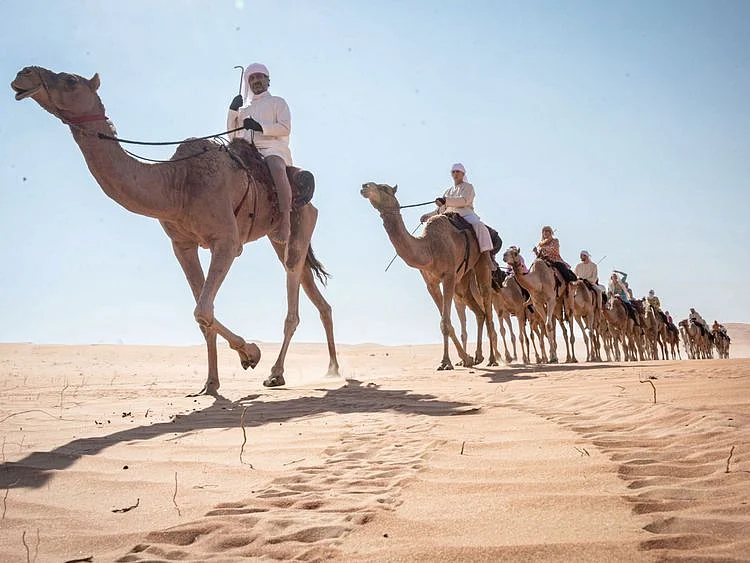How Abu Dhabi nurtures camels, a thriving heritage
Its cultural symbolism apart, the camel plays a key role in enhancing food security

Abu Dhabi: The camel population in the Emirate of Abu Dhabi has increased to approximately 476,082.
This includes: 99,071 camels in Abu Dhabi (83,879 females and 15,192 males), 254,034 in Al Ain (215,968 females and 38,066 males), and 122,977 in Al Dhafra (104,987 females and 17,990 males)
According to the Abu Dhabi Agriculture and Food Safety Authority (ADAFSA), efforts to develop camel livestock have been stepped up to reinforce the camel’s status as an authentic symbol of cultural heritage, alongside strengthening its economic position within the food security system. This is being achieved by providing quality veterinary services, raising awareness about the importance of camel health, breeding, and production, and participating in international efforts to ensure the growth and sustainability of the strategic sector.
The camel plays an important role in enhancing food security by providing milk, meat and fibre. It is also used as a means of transporting goods and people in some communities, contributing to achieving sustainable development goals related to eradicating hunger, eliminating poverty, empowering women and protecting and sustaining ecosystems.
As the recent World Camel Day coincided with the International Year of Camelids, declared by the United Nations for 2024, the aim was to highlight the value of camels.
Food security
The camel plays an important role in enhancing food security by providing milk, meat and fibre. It is also used as a means of transporting goods and people in some communities, contributing to achieving sustainable development goals related to eradicating hunger, eliminating poverty, empowering women and protecting and sustaining ecosystems.
ADAFSA provides comprehensive care for camels, including preventive, curative and productive veterinary services, providing vaccines and medicines, and combating diseases and pests. During the past year, 185,797 veterinary services were provided to 130,700 camels, covering various types of treatments, examinations, and follow-ups. Additionally, the authority provideds camel spraying services to combat external parasites for 237,487 camels during 2023.
Camel beauty competition
Since 2009, ADAFSA has supported the Al Dhafra Camel Mazayna (beauty competitions) Festival by providing curative and preventive veterinary services and conducting laboratory tests for participating camels. The same applies to camel races, where the authority offers veterinary services to participating camels. This annual participation ensures the health and safety of camels and promotes fair competition among participants.
The authority issues veterinary health certificates for camels intended for export to various countries, in addition to routine fertility checks, ear-tagging and registering them in the animal identification and registration system, and spraying them to combat external parasites.
The authority organises numerous educational lectures on the benefits of camel milk and workshops to educate camel breeders about camel diseases, their prevention and treatment methods, and biosecurity requirements that enhance camels’ immunity against diseases.
Biobank
The Centre has also established the first biobank of reference materials for the conservation of biological isolates and specialised tissue culture cells from camels. This biobank will improve disease control, vaccine development, diagnostic kits, laboratory analysis methods, scientific research and training.
The Reference Centre has enriched the global gene bank with several complete or partial genetic sequences of various pathogens affecting camels, enhancing the country’s position in camel disease research. Additionally, relying on modern diagnostic tools will significantly aid in the accuracy of diagnosis and unravelling the mysteries of many camel diseases.
Genetic sequences
Knowing the genetic sequences of camel pathogens, especially viruses, helps in controlling them by understanding their epidemiology, etiology, and genetic maps. It also aids in developing new diagnostic methods or studying the possibility of combining or mutating viruses, resulting in viruses with varying virulence, thus enhancing the efficiency of diagnosing different camel diseases.
Sign up for the Daily Briefing
Get the latest news and updates straight to your inbox
Network Links
GN StoreDownload our app
© Al Nisr Publishing LLC 2025. All rights reserved.